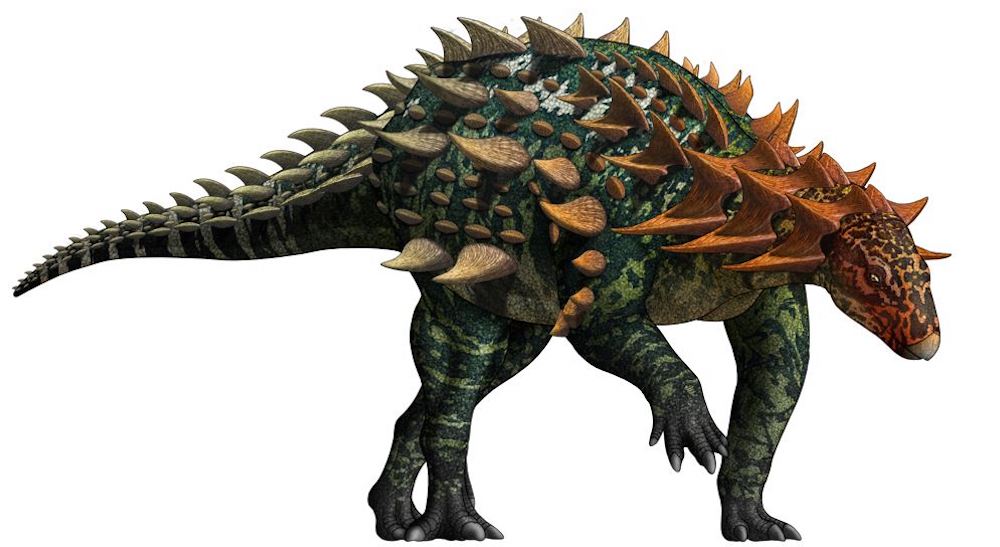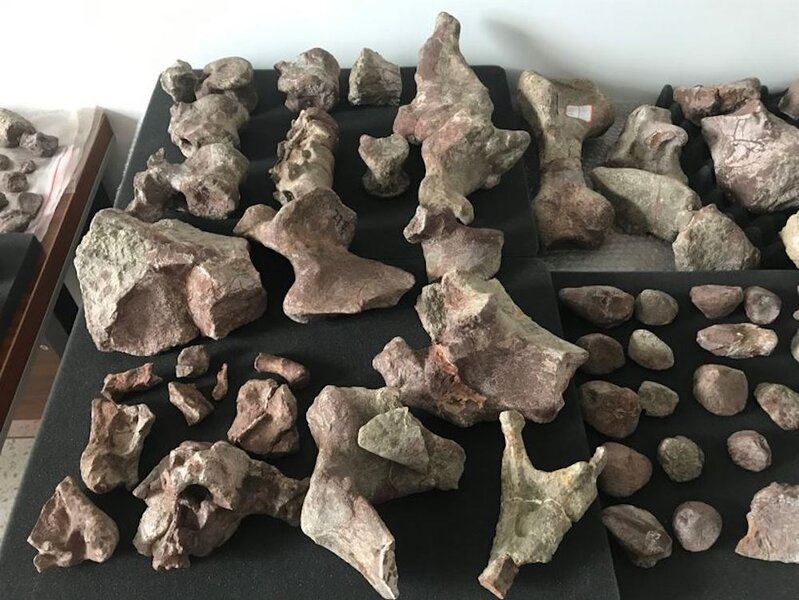Create a free profile to get unlimited access to exclusive videos, sweepstakes, and more!
New armored dinosaur species could walk on two legs
It's like if a pangolin was ten feet tall.

Xing Xu and Shundong Bi from the Centre for Vertebrate Evolutionary Biology at Yunnan University, along with colleagues, recently recovered a partial skull, mandible, the forelimbs and hindlimbs, and approximately 120 pieces from a new species of armored dinosaur called Yuxisaurus kopchicki. Their findings were reported in the journal eLife.
The first pieces of the dinosaur were uncovered in 2017 when a farmer in the Yunnan province of China found some bone fragments buried in the dirt. Paleontologists then went to the site, which is part of the Fegjiahe Formation, a well-known fossil site famous for its sauropod bones and started to dig.
“Yunnan is famous for Early Jurassic dinosaurs and has produced bones of some famous dinosaur species such as the sauropodomorph Lufengosaurus and the theropod Sinosaurus, a type of carnivorous dinosaur with two cranial crests similar to Dilophosaurus,” Xu told SYFY WIRE.
They did find sauropods as they expected, but they also found something wholly new: the nearly complete fossilized remains of a previously unknown armored thyreophoran — meaning armored — dinosaur. Yuxisaurus is different enough from its dinosaurian relatives that it has been granted not just a new species name, but represents an entirely new taxon.
Yuxisuarus kopchicki dates back to between 174 and 192 million years ago in the early Jurassic, and characteristics of its bones suggest it is a common ancestor of the more famous armored dinosaurs like stegosaurus and ankylosaurus, both of which are well known for their armored bodies and weaponized tails.
Like its famous descendants, Yuxisaurus was also heavily armored, covered nearly from head to tail in spiked osteoderms which were probably used primarily for defense. The heavy armor plating gives us reason to believe that it was probably a slow-moving herbivore, similar in demeanor to many of today’s large grazing animals.
“We found those 120 pieces of armor. It was heavily built, probably stocky, and didn’t move swiftly,” Bi told SYFY WIRE.
In addition to the differences in its appearance, it also differed from stegosaurus and ankylosaurus in at least one other important way. Based on its morphology, paleontologists believe Yuxisaurus was what’s known as a facultative quadrupedal, which means it primarily walked on four legs, but could walk on two when the need arose.
To get a picture of how that might have looked, imagine a modern rat except it’s three meters long and covered in armored spikes. Rats mostly run around on all four legs, but are capable of leaning back on their hindlimbs and using their forelimbs for object manipulation. It’s likely Yuxisaurus did the same thing, getting up on its back legs to more easily forage for Jurassic snacks in the higher foliage.
“For example, when Yuxisaurus tries to get food in higher places like tree leaves it might be good to walk on two legs. Early members of thyreophoran dinosaurs were mostly bipedal and Yuxisaurus shares many similarities to other early thyreophoran dinosaurs. Only the later-diverging dinosaurs such as stegosaurs and ankylosaurs became obligate quadrupedals,” Xu said.
Those earlier thyreophoran dinosaurs, like Scutellosaurus, had relatively primitive armor, closer to scales in appearance, while Yuxisaurus and its descendants took those osteoderms to an extreme. In this way, Yuxisaurus represents a transitional species between the two modes of living, having the new type of heavy armor while maintaining the ability to move on two legs when needed. It gives us insight into how the earlier thyreophorans evolved into the armored tanks they would later become. Its appearance in China so early in the evolutionary story also sheds light on how quickly armored dinosaurs spread over the Earth during the Jurassic. Before much longer, armored dinosaurs were found all over the world, and today their fossils are found on nearly every continent.
We’re only bummed we couldn’t see them in the flesh. Seeing what is essentially a 200-million-year-old armored cow would have been cool enough. Seeing one come at us on two legs must have been a sight to behold.



























